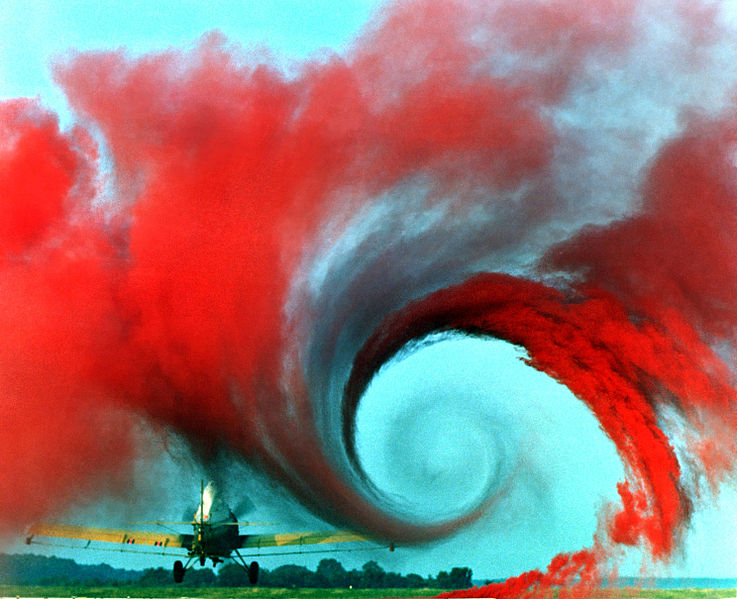There’s a lot of sexy data we’ve got going here.
Tori Bellaci
Sorry for the long absence, but science conference season is behind me, and the Mythbusters are doing science! I thought the Mythbusters did an admirable job of actually trying to explain the science of the fluid dynamics regarding the benefit of flying in the V-formation. Talking to people who knew what they were talking about definitely helped.
I won’t harp on it, because, surprise, surprise, Wikipedia does a really good job of explaining it, but something they don’t spend much time on is the effect of the trailing vorticies on the plane (or bird) generating them. Seeing as the wingtip vortex is creating an upwash (utilized by the trailing aircraft), it is obvious that if the plane is driving air up at the tip, a corresponding negative lift is acting on the wing (as well as increased drag). This is obviously not beneficial to flight, nor are the powerful, and stable vorticies that can persist for a long time and disrupt other planes’ flight (esp. smaller ones).
While they can’t be eliminated completely in a three-dimensional world lacking infinite wingspans, aircraft manufacturers have devised some strategies for limiting the effect. The most noticeable, perhaps, is the winglet, which decreases the pressure difference on either side of the airfoil, by making that edge vertical.
As usual, the Mythbusters’ data logging was less than extensive/thorough, though. I would have really like to see them use the smoke generators on the plane close to the wing tips to visualize the vorticies. I’m not sure if it is even possible to do this; maybe you’d have to line up a plane’s wingtip behind another’s smoke trail. But besides being cool, it would have let the trailing planes know where they needed to be in order to exploit the vortex in whatever formation they were flying.
The toilet stuff was cool; I have also had problems with batteries under-performing under cold conditions…


